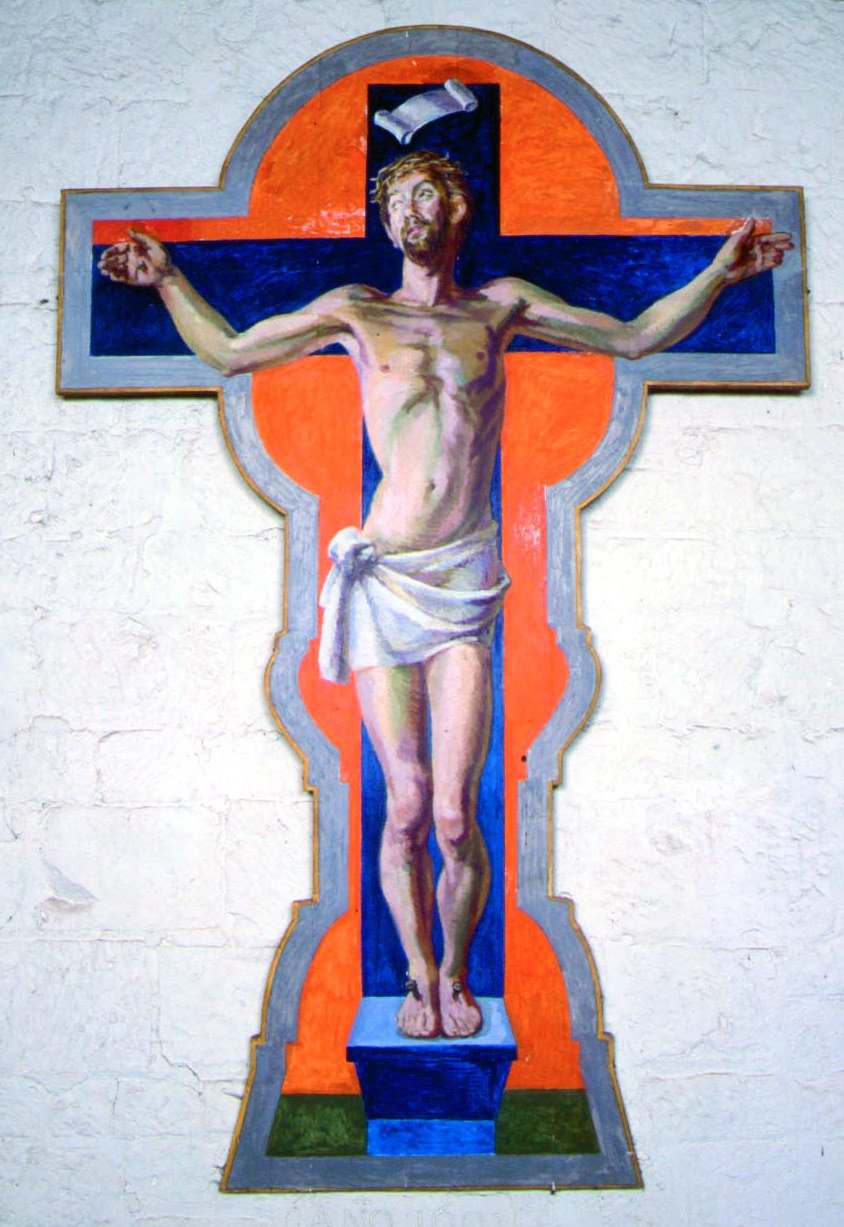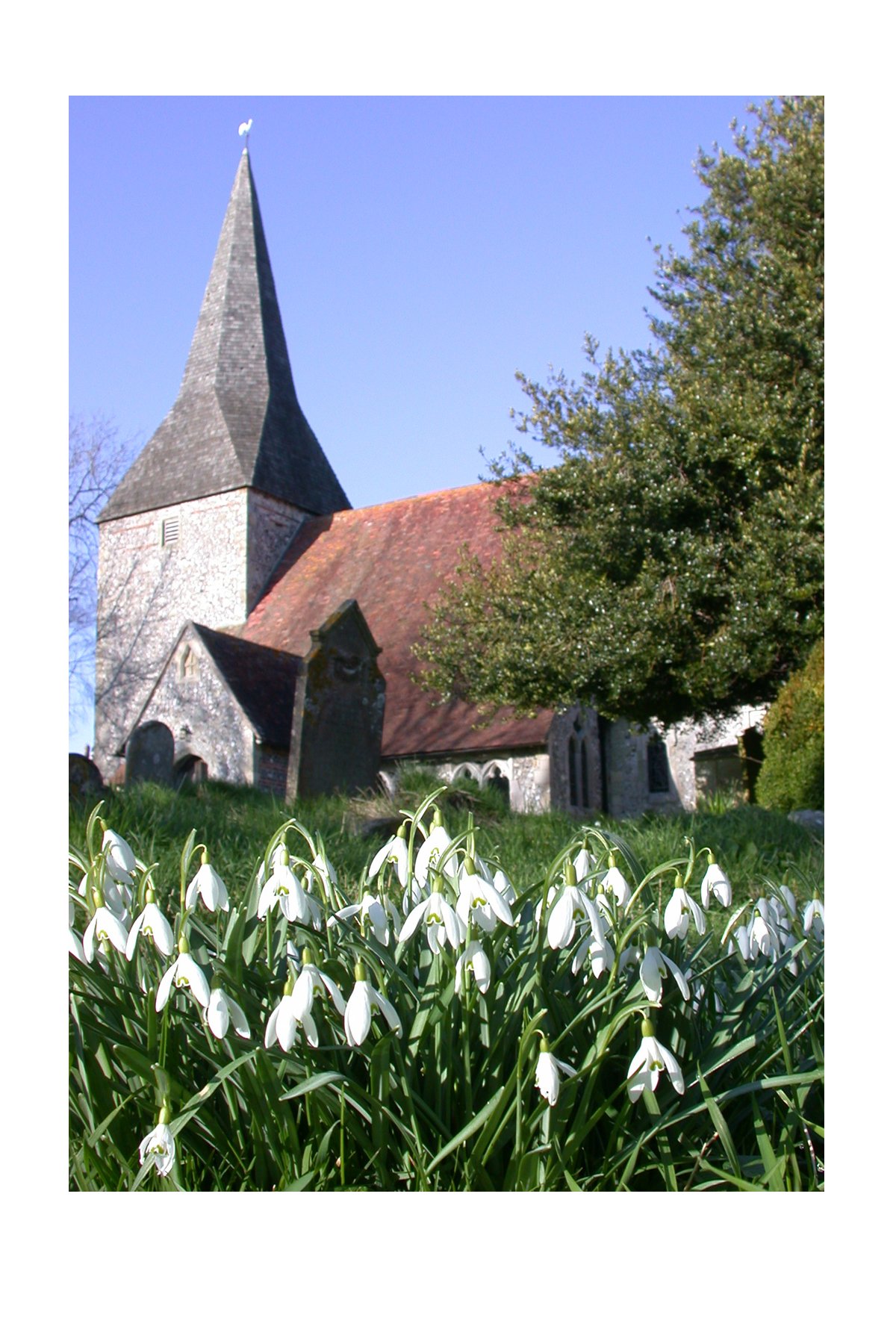Duncan Grant: The Victory of Calvary (or Crucifixion)


Title: The Victory of Calvary (or Crucifixion)
Artist: Duncan Grant (1885-1978, British)
Location: St Michael and All Angels, Berwick (C of E)
Date: 1941
During WWII, Bishop Bell commissioned Bloomsbury group artists, Duncan Grant, Vanessa Bell and Quentin Bell to cover much of the church in extensive murals. Duncan Grant’s The Victory of Calvary shows Christ in victory on the Cross. Jesus is not obviously suffering; here he is the victor, standing on a platform rather than hanging down. Grant originally depicted Christ unclothed, a decision which drew criticism from the Church, so he repainted a cloth around his waist.
Duncan Grant was the lead artist for the murals in Berwick Church and put forward the initial proposals. He moved with Clive and Vanessa Bell (sister of Virginia Woolf) to Charleston Farmhouse, at the foot of the Downs, three miles to the west of Berwick, in 1916. His work is influenced by his travels in Italy where as an art student he had seen the mosaics at Ravenna and copied the frescoes of Piero della Francesca (1420–1492) at Arezzo. Then in Paris he had copied works by Chardin (1699–1779) portraying scenes from everyday life, ordinary people in work or recreation. At the same time he studied the work of the Impressionists and was later greatly influenced by the Post-Impressionists such as Cezanne, Seurat, and others.
Duncan Grant became known as a British Post-Impressionist for his use of bright colour and direct application of paint freed of convention. The murals at Berwick exhibit influences from all these traditions, but also something of the artist’s focus on the intimacy of the home and personal relationships and their love of the beauty and simplicity of the Downland landscape. (Source - See more information here)
Further information
Medium: Oil painting
Permanent display
See Grant’s The Victory of Calvary on the Ecclesiart map here.
Commissioner: Bishop George Bell
Other artworks in churches by Duncan Grant: Murals for St Blaise Chapel in Lincoln Cathedral
